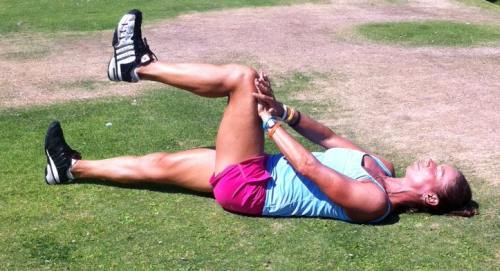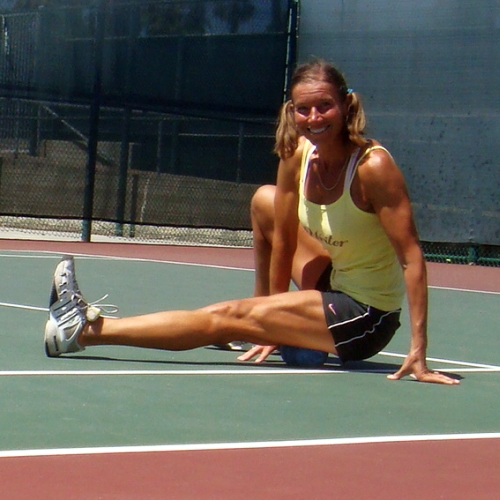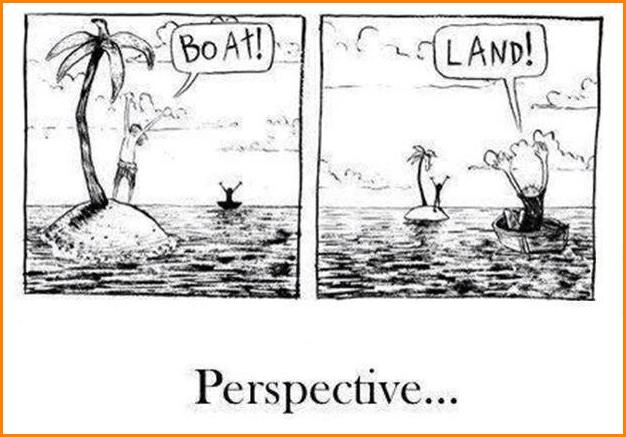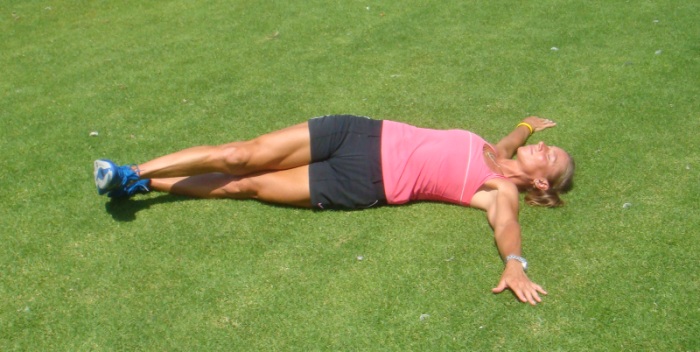Your athletic performance and life well-being are often limited by your most significant weaknesses, mental or physical.
For the physical weaknesses your major goal should be to find them and improve them as much as possible to prevent future overuse injuries and to improve your performance.
Often, tennis players have unilateral weakness (on one side, often on the non-dominant side) of the hip abductors—the muscles on the outside of the hip (gluteus medius and gluteus minimum) that are responsible for moving your leg to the side (abducting). You need this motion during the side movements and changing the directions.
With this weakness comes overactive and tight groin (aka adductors—the muscles on the inside of your thighs). You may not feel that your groin is tight until you get injured. Or when you start doing exercises that are challenging to the groin, you realize how tight you are. For example the kettlebell windmill from the previous post is a perfect example of diagnosing your adductors.
A Tight Groin
The hips are extremely important for every athlete, and especially tennis players. Even non-athlete benefit from strong and evenly balanced hips.
Most of the muscles that originate movement connect to the hips. The hips are connecting the upper and lower body, and need to provide strength, stability and flexibility to both halves. So if your hips are misaligned, the movement is not going to be correct—your knees have to compensate with a changed movement pattern and a new dysfunction will develop there, or in your ankles.
In similar way, if for example one hip is slightly higher then the other, then the shoulders that are directly above the hips compensate and are off balance. Then when you hit thousands of tennis strokes with a misaligned shoulder, it is easy to see that it will cause stress on surrounding muscles and tendons. And over time, little by little, you might get a nagging shoulder problem.
The hip equilibrium needs to be in all planes – from the front and the side; and both hips need to be at the same height as well. If your hips are off balance in one plane, over time more impurities will sneak in to your posture and more injuries into your fitness. Re-read this excellent post on the simplest injury prevention rule.
Besides strengthening of your glutes, develop a habit of stretching your groin (adductors) with this simple and passive stretch. Passive is good for you because you do not need to do anything, no pulling, struggling, pushing… just lay down, breathe, relax and let the gravity do the work. There should not be any excuses to not to do it regularly. It is so simple.
Simple Passive Stretch for a Tight Groin
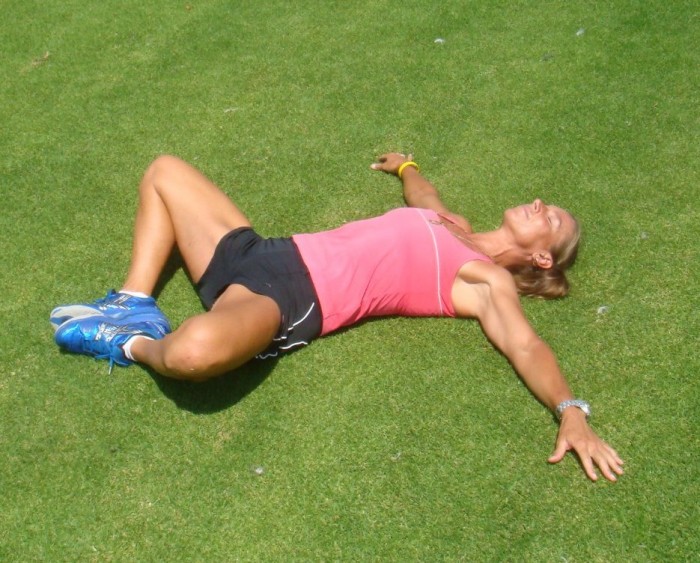
- Lie on your back, spread your arms comfortably to the sides.
- Bring your feet toward your torso while putting your soles together.
- Let your knees drop to the sides.
- Pay attention to having your feet perfectly centered.
- Your lower back may or may not be flat on the floor, it doesn’t really matter. Just make yourself comfortable.
- Don’t push on your knees with your hands, or don’t force it with the leg muscles, just let the gravity work for you.
- Hold the stretch for 2—3 minutes and use this time for relaxation, meditation or any other pleasant thoughts.
This stretch is so simple and pleasant, you can do it in your bed in the morning before you get up and at night before you fall asleep, so your hips are nicely aligned over night.
Another simple and pleasant version:
- lay down on your back with your glutes close to the wall and legs straight up on the wall.
- Slowly open your straight legs and let them gently fall down the wall, as deep as the gravity wants to take them. Your adductors will resist.
- Keep breathing and relaxing and each time you feel that your adductors are more stretched out, let your legs open even more.
- Stretch for 2–3 minutes or even more.
Exercise Combination to Relieve a Tight Groin
- monster walk with the rubber bands to strengthen the abductors
- this passive adductor stretch for 2–3 minutes.
- Deep squat with pushing the knees apart for 1–2 minutes.
- Repeat 4 times.
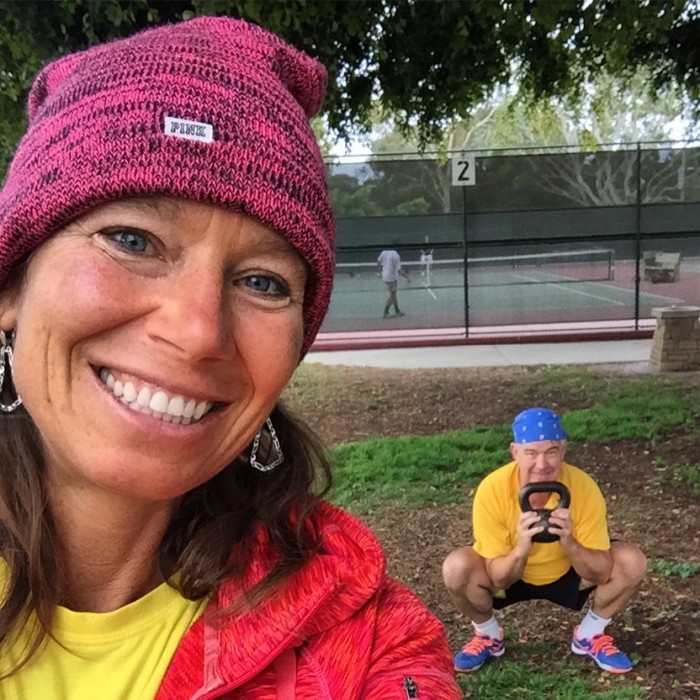
Pay attention to how your hips feel, and all their weaknesses and strengths. Performing this simple stretch combined with strengthening should bring results pretty fast and you will notice that you move much faster and smoother, and you won’t be so stiff and tight after your hard training sessions. Just this should be motivation do get down on the floor to do this stretch daily.
If you want to learn more about injury prevention and tennis specific training, get yourself the little cute book “Tennis Fitness for the Love of it“, do what’s in it, and shine… Feel free to comment or email about the results you get from this simple stretch, and be awesome!
.

